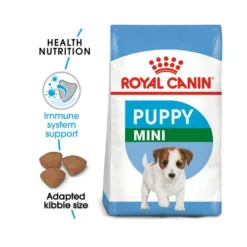New
Healthy Treats and Superfoods That Boost Pet Wellness
Introduction to Treats and Superfoods for Pets
Treats are often thought of as little indulgences—small bites that bring joy to dogs and cats, reinforce positive behavior, and deepen the bond between pet and owner. However, in recent years, the concept of a “treat” has evolved beyond mere snacks. No longer are they only about flavor or texture; today’s responsible pet owners are asking whether these extras can also contribute to health. The rise of functional treats and superfoods reflects a shift in perspective, where every bite becomes an opportunity to nourish the body and mind.

The idea of superfoods for pets parallels the human wellness movement. Just as people have embraced blueberries, kale, and chia seeds for their dense nutrient content, similar ingredients are being adapted into canine and feline nutrition. The term “superfood” does not have an official scientific definition, yet it generally refers to natural ingredients exceptionally rich in vitamins, minerals, antioxidants, or phytonutrients that promote vitality. For pets, these foods can support immune defenses, protect organs, enhance mobility, and even improve mood.
At the same time, there is a responsibility to choose wisely. Pets cannot tolerate certain human foods, and what is beneficial for one species may be toxic to another. Grapes, onions, and chocolate are prime examples of human superfoods that can cause life-threatening reactions in dogs and cats. Therefore, education is essential: owners must learn which items can be safely shared and which should be avoided altogether. The guiding principle is balance—treats should never replace complete meals but instead act as complementary boosters to a well-rounded diet.
Understanding the role of healthy treats also reshapes the training process. Instead of relying on biscuits packed with fillers or sugar, owners can use nutrient-dense options to reward good behavior. This practice creates a cycle where positive reinforcement coincides with nutritional benefit. For cats, who are often picky, creative treat solutions may help introduce variety without disrupting their sensitive digestive systems. By reimagining treats as functional supplements rather than indulgent extras, we take a significant step toward holistic care.
The modern pet industry reflects this cultural shift. Shelves once dominated by basic biscuits and jerky strips now display salmon-skin crisps, dehydrated liver cubes, pumpkin chews, and probiotic-infused bites. Homemade options are also gaining popularity, with pet parents preparing their own recipes to control quality and ensure freshness. Social media communities share ideas, from frozen yogurt cubes for dogs in summer to baked tuna chips for cats. The trend highlights an important truth: nutrition and affection are not mutually exclusive—they can be harmonized in every snack.
Exploring Healthy Ingredients That Enhance Vitality
When we speak of superfoods for pets, we are really talking about ingredients that deliver exceptional nutritional density without unnecessary calories. They are nature’s concentrated sources of wellness, able to address common issues such as joint stiffness, weak immunity, or digestive imbalance. While the list of options is broad, several categories stand out as particularly effective for companion animals.
One key group includes antioxidant-rich fruits and vegetables. Blueberries, cranberries, and pumpkin are frequently cited for their protective compounds. Blueberries contain anthocyanins that defend cells against oxidative stress, reducing the risk of age-related decline. Cranberries support urinary tract health, an especially important benefit for cats prone to infections or crystals. Pumpkin offers soluble fiber that regulates bowel movements, easing both diarrhea and constipation. The versatility of these ingredients allows them to be incorporated into treats, toppers, or frozen cubes.

Another vital category is lean animal proteins. Freeze-dried liver, salmon jerky, and turkey strips provide concentrated sources of amino acids necessary for muscle maintenance, hormone production, and tissue repair. Unlike highly processed treats loaded with starch, these protein-based options align closely with the natural dietary needs of carnivorous pets. Additionally, oily fish like sardines and mackerel supply omega-3 fatty acids, which reduce inflammation, support heart function, and enhance skin and coat condition. For older dogs with arthritis or cats with inflammatory bowel disease, omega-rich treats act as therapeutic supplements.
Seeds and grains also find a place in the conversation. While pets do not require them in large amounts, certain options offer unique advantages. Flaxseed delivers alpha-linolenic acid, a plant-based omega-3 that can complement marine sources. Chia seeds absorb water and expand, creating a gel-like texture that supports hydration and digestive regularity. Oats, often used in baked treats, provide soluble fiber and gentle energy release, making them suitable for sensitive stomachs. The key lies in moderation, as excessive quantities may overwhelm digestive capacity.
Herbs and botanicals deserve special mention. Parsley freshens breath, while turmeric contains curcumin with anti-inflammatory potential. Chamomile can calm anxious dogs, and ginger may ease nausea during car rides. Although these ingredients sound like human remedies, they can be safely incorporated into pet nutrition when used properly. Still, dosage and preparation are critical; concentrated extracts or essential oils can be harmful, so whole or dried forms are preferable.
Finally, probiotics and fermented foods represent an emerging category of pet superfoods. Yogurt, kefir, and specially formulated probiotic chews populate the market, each designed to balance gut flora. A healthy microbiome influences immunity, digestion, and even mood through the gut-brain axis. For animals suffering from chronic gastrointestinal upset or antibiotic side effects, probiotic treats can restore equilibrium. This field continues to expand, with research revealing new strains that may target specific conditions.
The beauty of these ingredients lies not only in their biological effects but in their versatility. They can be offered fresh, dehydrated, baked, or mixed into daily meals. Owners who enjoy cooking may experiment with homemade recipes, while others may rely on carefully curated commercial products. Either way, the goal remains the same: transform ordinary snacks into strategic tools for wellness.
Practical Guidelines for Integrating Treats and Superfoods into Daily Life
While enthusiasm for superfoods is high, practical application requires balance and discipline. The first principle is proportion: treats should never exceed ten percent of a pet’s daily caloric intake. Overindulgence, even with healthy options, can still lead to obesity or nutrient imbalance. Owners must calculate approximate calorie needs based on size, age, and activity, then ensure that snacks fit within those boundaries.
Portion control also extends to frequency. Dogs thrive with structured reward schedules, such as using small bites during training sessions rather than offering large chunks sporadically. Cats, on the other hand, may respond better to occasional but enticing morsels, given their naturally solitary hunting instincts. By aligning treat frequency with behavioral patterns, owners enhance both training success and nutritional balance.

Diversity represents another cornerstone of effective treat integration. Rotating ingredients prevents monotony and broadens nutrient exposure. A weekly routine might include blueberries on Monday, salmon skin on Wednesday, pumpkin puree on Friday, and yogurt drops on Sunday. This approach mimics dietary variety in the wild, reducing the risk of developing intolerances. It also keeps pets engaged, preventing boredom and selective eating.
Preparation and safety considerations cannot be overstated. When offering homemade treats, owners must avoid toxic ingredients such as onions, garlic, xylitol, or chocolate. Cooking methods should preserve nutrients without introducing harmful elements; for example, baking at moderate temperatures retains antioxidants better than frying. Freezing can extend shelf life and create refreshing snacks for warm weather. Sanitation is equally critical, particularly with raw or fermented products, as pets can transmit pathogens to humans.
Monitoring outcomes is the final step in responsible integration. Owners should observe changes in coat shine, stool consistency, energy levels, and breath odor after introducing new superfoods. Positive improvements indicate compatibility, while signs of vomiting, itching, or diarrhea suggest intolerance. Keeping a simple food journal helps track reactions, allowing guardians to fine-tune selections over time. Collaboration with veterinarians adds an extra layer of assurance, particularly for pets with chronic conditions or medication regimens.
Incorporating treats into daily life also extends beyond nutrition. They can be part of enrichment strategies, such as hiding small bites in puzzle toys, scattering them for scent games, or freezing them inside chewable molds. These practices stimulate mental activity, reduce anxiety, and channel natural instincts. Thus, the role of healthy treats transcends feeding—they become instruments of emotional well-being and cognitive development.
Ultimately, the guiding philosophy is harmony. Treats and superfoods should not compete with complete meals but should complement them, filling nutritional gaps while enhancing the joy of companionship. By adopting mindful routines, pet owners can turn simple snacking into a powerful ritual of care, ensuring that every reward serves a higher purpose.
Global Perspectives on Functional Pet Nutrition
The idea of fortifying canine and feline diets with nutrient-dense extras is not limited to one region of the world. Different cultures have long-standing traditions of using natural ingredients to support animal vitality, and these practices are increasingly blending into modern commercial offerings. In Asia, for example, seaweed and fish-based snacks are popular because of their rich iodine content and trace minerals that aid thyroid regulation. Japanese pet companies often incorporate matcha powder into biscuits, not for caffeine but for catechins that act as antioxidants. While in moderation such innovations may enhance wellness, careful formulation ensures safety for species with delicate metabolisms.
In South America, quinoa-based chews have gained traction, showcasing the protein-rich heritage grain that offers a complete amino acid profile. Farmers in Andean regions historically shared surplus quinoa with working dogs, and today this legacy has been transformed into freeze-dried bites that travel across international markets. Meanwhile, in Africa, moringa leaves are celebrated for their dense vitamin composition and are now being adapted into canine supplements designed to boost stamina and resilience in hot climates.
Europe presents another unique approach, with a focus on dairy-derived wellness snacks. Kefir treats for cats and probiotic-infused cheese cubes for dogs reflect a tradition of fermentation that extends to animal care. Scandinavian markets even sell cod-liver oil chews that supply vitamin D to pets living in low-sunlight environments. These examples highlight a growing truth: pet nutrition is globalizing, borrowing from diverse culinary traditions and adapting them into modern superfoods.
This global influence does more than diversify flavors—it broadens the nutritional landscape, ensuring that pets benefit from a wide spectrum of natural compounds. As awareness grows, owners increasingly seek products inspired by world traditions, confident that cultural wisdom combined with modern science yields innovative pathways to longevity.
Case Studies and Real-Life Transformations Through Nutrition
Stories often illustrate the power of healthy treats more vividly than clinical data. Take Bella, a seven-year-old Labrador who struggled with recurrent ear infections and dull fur. Her owner, after consulting with a veterinarian, began incorporating salmon-skin strips and turmeric-infused biscuits into her diet. Within six months, Bella’s coat gleamed again, her inflammation subsided, and her need for antibiotics decreased. This case underscores how carefully chosen treats can reduce reliance on pharmaceuticals and restore natural resilience.
Another example comes from Max, a domestic short-haired cat with chronic constipation. Standard kibble provided little relief, but the introduction of pumpkin puree treats and yogurt drops transformed his digestive rhythm. Not only did his stools normalize, but his overall energy improved, illustrating the profound connection between gut health and vitality. His guardian reported that the combination of fiber and probiotics succeeded where medications had failed, emphasizing the therapeutic potential of functional snacks.
There are also success stories regarding behavior. Luna, an anxious rescue dog, showed constant pacing and whining whenever left alone. Her trainer suggested chamomile-infused biscuits and lavender-baked chews. Over time, Luna displayed calmer responses, suggesting that botanicals contributed to stress reduction alongside behavioral training. While treats were not the sole solution, they acted as supportive tools in her recovery journey.
Cats, too, exhibit notable responses to enrichment-focused snacks. Milo, a three-year-old Bengal, grew restless indoors, often scratching furniture and meowing incessantly. His owner introduced interactive feeding toys filled with freeze-dried chicken hearts and small sardine chunks. The mental challenge combined with nutritious rewards redirected his energy, fostering satisfaction and reducing destructive tendencies. Milo’s story demonstrates how snacks can transcend feeding and become part of emotional management.
These individual cases represent broader truths: well-formulated treats can address skin conditions, digestive irregularities, joint pain, dental issues, and even behavioral struggles. While results vary and must be tailored to each pet, the consistent theme is clear—nutrition is not passive fuel but an active partner in holistic health.
Future Horizons of Pet Wellness and Superfood Innovation
The landscape of pet nutrition is dynamic, with scientific discoveries and consumer demands driving new directions. One emerging trend is the use of insect-based proteins in treats. Crickets, black soldier fly larvae, and mealworms are being incorporated for their high protein efficiency and low environmental footprint. These snacks appeal to sustainability-conscious owners while delivering amino acids comparable to traditional meats. Early studies suggest that insect proteins are hypoallergenic, making them suitable for pets with food sensitivities.
Another horizon lies in personalized nutrition. Advances in genetic testing and microbiome analysis allow companies to tailor superfood-infused treats to individual pets. A dog with a predisposition to joint degeneration might receive glucosamine-enriched chews, while a cat prone to urinary crystals could benefit from cranberry-laced bites. Subscription models already exist where pet owners submit health data and receive monthly shipments of customized snacks. As technology becomes more accessible, personalization will likely define the next era of pet wellness.
Plant-based superfoods are also expanding, not to replace meat entirely but to complement it. Spirulina, chlorella, and wheatgrass powders are being added to biscuits for their detoxifying and immune-enhancing qualities. These ingredients, once considered niche supplements for humans, are entering mainstream pet products with increasing popularity. Similarly, adaptogens like ashwagandha and reishi mushrooms are being tested for their ability to balance stress responses in pets, hinting at a future where snacks target emotional as well as physical well-being.
Packaging and delivery methods are evolving too. Freeze-dried technology allows preservation without additives, ensuring that nutrients remain intact. Some companies are experimenting with functional gels, squeezable pouches, or dissolvable strips that deliver precise doses of vitamins and minerals. Interactive formats, such as dental sticks with embedded probiotics, merge oral care with gut health support, blurring the line between treat and therapeutic tool.
Looking forward, the integration of artificial intelligence into product design may revolutionize the industry. Algorithms could analyze massive databases of veterinary records, nutritional science, and owner feedback to predict the most effective superfood blends. This data-driven approach would accelerate innovation, ensuring that future treats are not only tasty but scientifically validated for maximum impact.
Emotional and Cognitive Dimensions of Nutritious Rewards
The relationship between nourishment and mental health has long been recognized in humans, and an increasing body of evidence suggests that animals experience similar effects. Healthy snacks enriched with natural compounds do more than maintain physical vigor; they also influence behavior, mood, and learning capacity. For instance, omega-3 fatty acids from sardines or flax not only support joint mobility but also appear to moderate hyperactivity in certain dogs, enabling more focused training sessions. When paired with consistent reinforcement, these rewards foster improved memory and obedience outcomes.
Playful enrichment also intersects with the emotional role of snacks. Hiding nutritious morsels inside puzzle toys challenges pets to solve problems, activating curiosity and stimulating the brain. The anticipation of finding a treat heightens dopamine release, creating joy while strengthening the human-animal bond. For felines, whose hunting instincts remain powerful despite domestication, the act of stalking, pouncing, and “capturing” a treat hidden in a feeder ball satisfies natural drives. This satisfaction translates into reduced stress, fewer behavioral issues, and a more balanced temperament.
Moreover, functional rewards can assist in addressing conditions such as separation anxiety. Calming botanicals like chamomile or valerian root, when infused into biscuits, may encourage relaxation during moments of distress. Although they are not substitutes for training or professional guidance, such snacks can provide supplementary comfort. Guardians often report that their pets show gentler transitions when left alone, demonstrating how thoughtfully formulated nibbles extend beyond sustenance into emotional well-being.
The role of healthy treats in inter-species communication should not be underestimated either. Every snack given is a form of language—an affirmation of trust, affection, and reward. By ensuring these offerings are simultaneously wholesome, owners send a consistent message: “you are cherished, and your health matters.” Over time, this message deepens attachment, reinforcing a relationship built on care rather than indulgence alone.
Industry Evolution, Market Dynamics, and Ethical Responsibility
The rise of superfood-inspired treats has created a thriving sector within the global pet industry, valued at billions of dollars annually. Market surveys indicate a surge in demand for natural, minimally processed snacks as consumers become more conscious of labels and sourcing. Owners now scrutinize ingredient lists with the same vigilance they apply to their own groceries, favoring products free from artificial preservatives, synthetic dyes, or excessive fillers. Transparency has become a currency of trust, and companies unable to demonstrate clear sourcing face dwindling loyalty.
Behind this trend lies a web of agricultural, environmental, and ethical considerations. Producing salmon-based jerky, for example, requires fisheries to adopt sustainable practices to avoid depleting ecosystems. Similarly, the popularity of beef liver bites raises questions about the carbon footprint of cattle farming. Innovative companies are responding by turning to alternative proteins such as crickets or cultivated meat, framing their products as both nutritious and environmentally responsible. This alignment with sustainability values resonates strongly with younger pet owners who prioritize ecological stewardship.
Economic accessibility remains another layer of complexity. Premium superfood snacks often cost significantly more than conventional biscuits, leading to disparities in who can afford them. Some guardians may feel excluded from providing advanced nutrition due to budget constraints. In response, community-driven initiatives and small local businesses are exploring ways to deliver cost-effective but wholesome alternatives, often through cooperative models or bulk purchasing schemes. This democratization ensures that the benefits of functional treats are not confined to affluent households.
Ethics also extend to animal welfare beyond pets themselves. The sourcing of chicken, lamb, or fish for treats invites scrutiny regarding farming practices and humane treatment. Certifications such as “free-range,” “grass-fed,” or “responsibly harvested” are becoming more prominent on packaging. By selecting brands that prioritize welfare standards, owners contribute to systemic change, encouraging an industry shift toward compassion and accountability. In this way, every purchase becomes both a personal and political act, shaping not just the health of one dog or cat but the trajectory of global food systems.
Empowering Guardians Through Knowledge and Critical Choice
Education remains the foundation of responsible treat selection. While marketing campaigns often highlight buzzwords like “superfood,” “natural,” or “holistic,” guardians must cultivate discernment to separate substance from hype. Reading labels critically—identifying protein sources, examining fat content, and noting the order of ingredients—empowers owners to make choices aligned with genuine nutritional science rather than advertising slogans. Awareness of potential allergens, such as soy or wheat, further protects sensitive pets from unnecessary discomfort.
Veterinary guidance plays a pivotal role in navigating this complex landscape. Nutritionists and holistic practitioners can interpret ingredient lists, suggest safe proportions, and warn against hidden risks. For example, while turmeric can be beneficial in small amounts, excessive use may cause digestive irritation. A veterinarian’s input ensures that enthusiasm for functional snacks does not inadvertently lead to imbalance. Collaboration between guardians and professionals fosters a customized approach where treats support individual health profiles rather than generic trends.
Community networks also act as valuable resources. Online forums, local pet clubs, and social media groups provide platforms for sharing recipes, product reviews, and firsthand experiences. These networks democratize knowledge, allowing guardians to learn from one another and discover creative solutions. For instance, one owner might share a recipe for baked sweet-potato chips dusted with parsley, inspiring others to try affordable, homemade alternatives to store-bought snacks.
Ultimately, empowerment comes not only from information but from mindfulness. Every treat offered should be intentional, reflecting a balance of pleasure and health. Guardians who pause to ask, “Does this snack contribute positively to my companion’s life?” cultivate a deeper awareness of their role as caretakers. In doing so, they elevate feeding moments into acts of stewardship, ensuring that the joy of a wagging tail or a satisfied purr is accompanied by long-term vitality.

